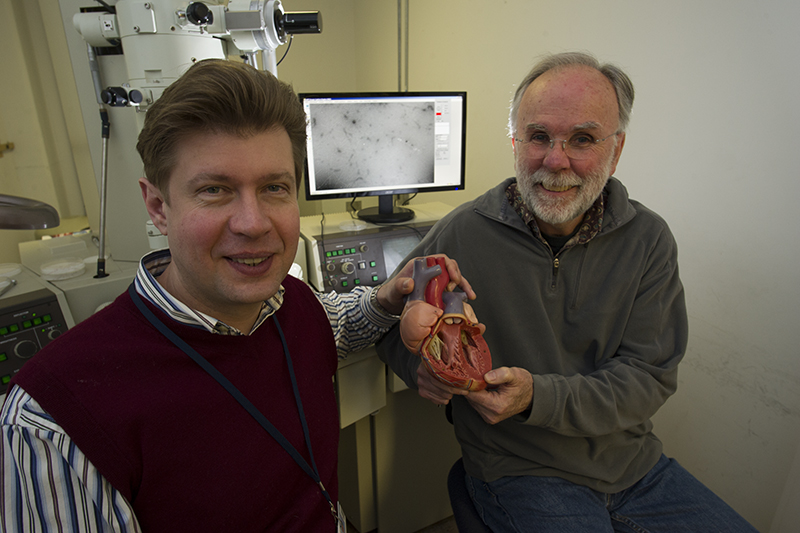Unlocking secrets of the heartbeat

Scientists at EVMS and the University of Arizona have deciphered the workings of a protein that plays a key role in regulating our heartbeats. Their findings could lead to treatment for a potentially deadly condition that affects more than six million Americans.
Vitold Galkin, PhD, (left in photo at right) Assistant Professor of Physiological Sciences, and Howard White, PhD, (right in photo, holding heart model) Professor of Physiological Sciences, working with University of Arizona colleague Samantha Harris, PhD, are studying cardiac myosin binding protein C (cMyBP-C). Mutations in that protein can lead to sudden cardiac death in young adults and hypertrophic cardiomyopathy (HCM) — a thickening of the heart muscle — in older adults.
Our hearts beat as a result of the interaction of the protein myosin with thin filaments in the heart muscle. This process switches individual heart cells from tension to relaxation in concert with the cardiac cycle, Dr. Galkin says.
“Despite evidence that more than 180 mutations in cMyBP-C lead to HCM,” he says, “the molecular mechanism of its action is unknown even in normal, healthy hearts.”
The team of researchers showed for the first time that one part of cMyBP-C likely activates the heart’s contraction, while a second similar part has the opposite effect. “That suggests that the two parts work in concert to modulate contraction/relaxation of the cardiac muscle,” Dr. Galkin says.
The discovery, published Feb. 6 in the Journal of Proceedings of the National Academy of Sciences, was a result of a multidisciplinary research approach.
“This work has a significant impact on our understanding of the fundamental mechanisms of cardiac muscle regulation and molecular mechanisms that lead to heart disease,” says Gerald Pepe, PhD, EVMS Foundation Chair in Biomedical Sciences and Professor and Chair of Physiological Sciences.
The research was funded by the American Heart Association and the National Heart, Lung, and Blood Institute of the National Institutes of Health.